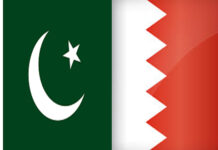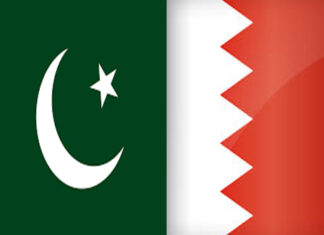In a shift that was already on the cards, the international consumer markets are now favoring Pakistani rice, particularly the Basmati variety, over the Indian rice. This revelation was made by the office bearers of the Rice Exporters Association of Pakistan (REAP), the exclusive representative body for rice exporters, during a media briefing at the National Press Club in Islamabad on Tuesday.
It has been noted in the past that some Pakistani products, including rice, were reportedly being exported under Indian branding from Dubai for enhanced marketing and branding by Indian exporters. However, according to what REAP members told the press, this trend has changed. As per REAP, quality issues surrounding Indian rice in global markets, particularly in Europe is the reason for its demand in the global consumers.
Chela Ram Kewlani, the current Chairman of REAP, says, “Now they (Indian exporters) are trying to sell rice as Pakistani brands or variants like Basmati, as Pakistani rice varieties are preferred in the international market for being pest-free and of good quality.”
He further highlighted that with a bumper crop of rice this year, REAP is confident that rice exports will surpass the record $3 billion, marking an encouraging development for the sector. He said that despite being the second major export item after textiles, the rice sector currently receives no subsidy or support from the government.
Is Pakistani rice actually superior?
The REAP might believe that the shift to Pakistan is all about the quality of our product but a major factor as previously reported by Profit, is the ban on export of rice placed by the Indian government. Due to concerns of high food inflation and rising prices in their own country, the Indian government decided to put a ban on all kinds of rice exports except the aromatic and high-end Basmati rice. Being the largest exporter of rice, boasting a 40% market share, this ban gives Pakistan a huge opportunity.
At the time of rice harvest and the placement of this ban by India, Toaufiq Ahmed, former vice president of the Rice Exporters Association of Pakistan (REAP), told Profit that with the looming possibility of reduced rice supply from India, the prices of Pakistani non-basmati rice have skyrocketed by over 20 % or at least $100 per ton. Since Pakistan’s fresh crop is nearly ready for harvest, growers have begun to raise prices for the new crop due to the uncertain global situation. He noted that rice exports had ranged from $2 to $2.5 billion in the past few years but could go much higher than that this year.
The prediction is on track for now but what is the problem with high exports? Afterall Pakistan is a country desperately looking to narrow its current account deficit. The problem is a simple one, food security vs export. The industry wants increased protection and facilitation to export because the global market pays higher profits, however the people of Pakistan want cheaper rice.
The exporters’ side of the story
Talking to media Kewlani emphasized the need for value addition in the rice industry by producing by-products, suggesting that this could generate more revenue from the sector. He lamented that despite contributing to the Export Development Fund (EDF), the rice sector has not yet been granted industrial status, indicating a lack of priority from the government.
Last year, floods led to a decline in rice exports, but Kewlani pointed out that this year’s improved production and new opportunities in emerging markets signal positive prospects for the sector. While government facilities are available to rice exporters, high tariffs in various countries pose challenges, necessitating agreements with these nations.
He expressed regret over missing the $3 billion target last year due to irrigation issues but remained optimistic about achieving the target in the current year. He stressed the importance of technology and innovative methods to enhance Pakistan’s $4.5 billion worth of rice export capability. The event at the National Press Club also honored REAP officials and members. Abdul Rahim Janoo, Group Chairman Sindh, predicted that the rice export sector would become the largest contributor to the national economy soon.
Various members of REAP suggested that, with enough support from the government, the export figure could reach up to $4 billion in the next two to three years. But how should the government extend its support? Afterall a taxpayer expects the government to protect his interests.
What is better, food security or dollars?
A potential downside of the surge in non-basmati rice exports could be a price hike in the local market. A rice shortage could have far-reaching impacts, affecting wheat, soybeans, corn, and maize prices, with potential consequences for food items and fuel. A shortage is already in effect resulting in panic buying by a lot of the countries.
While the producers of rice at REAP celebrate high profitability, the government gears up for another big concern. The annual food inflation in November 2023 stood at a staggering 29.23%. What is however more interesting is the requisite inflation in rice.
According to inflation data published by the Pakistan Bureau of Statistics (PBS), the inflation in the prices of rice was recorded at 58.32% in urban areas and above 60% in rural areas. With the REAP looking to break previous export records, the domestic market could be left with an even lesser amount of stock, resulting in worse levels of food inflation. With a commodity as essential as rice, a tight monetary policy just might not be enough to curb a demand-pull inflation cycle.
It is a question that other major rice exporters are also grappling with. Both Thailand and Vietnam emphasized that they will ensure their domestic consumers are not hurt by rising exports. “It’s unacceptable for a rice-exporting country to face tight supplies and high domestic prices,” Vietnam Minister of Industry and Trade Nguyen Hong Dien said in August.
It must be remembered here that Pakistan has the opportunity to take some of the Indian market away not in the long-term but just this year in particular. India is facing high food inflation for the same reason that the rest of the world is: the Russia-Ukraine war. Next year, if India is not facing similar food inflation, they will be back to take their place as the biggest rice exporter in the world. The question that faces policy makers is whether or not a one time export boost is worth the immediate pain that short term inflation will cause the public.
Therefore, the caretaker government might find itself at an impasse, let the free market dictate the trade and cause food insecurity or intervene and give up on crucial foreign exchange reserves that Pakistan desperately needs.

























Rice is not a staple food for Pakistan. Wheat flour is the staple food. As far as poultry feed is concerned, the usage is of broken rice which is a by-product of the milling process. The feed complex is more dependent on oilseed meal and corn and the misguided policies by the PDM Minister has led to the shortage of soybean meal. In fact SBM is now being imported again. Fools run this country unfortunately.
It’s a tough dilemma, in my opinion food security, especially containing food inflation, should be a priority for the government. Low inflation is the basis for sustainable economic growth.
Chutiya Imran, Laundia Bushra
Deontay Wilder wants it known that when the two fighters square up at the Riyadh Season Day of Reckoning later this month, he will not be easily defeated by Joseph Parker.